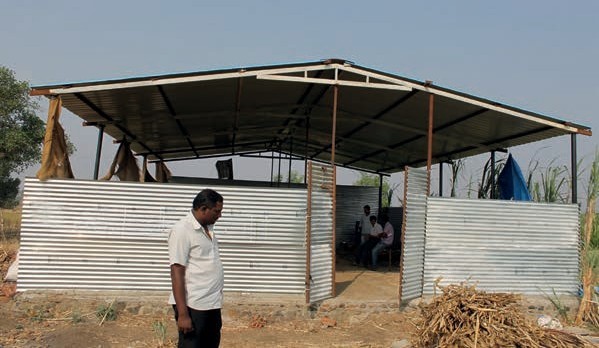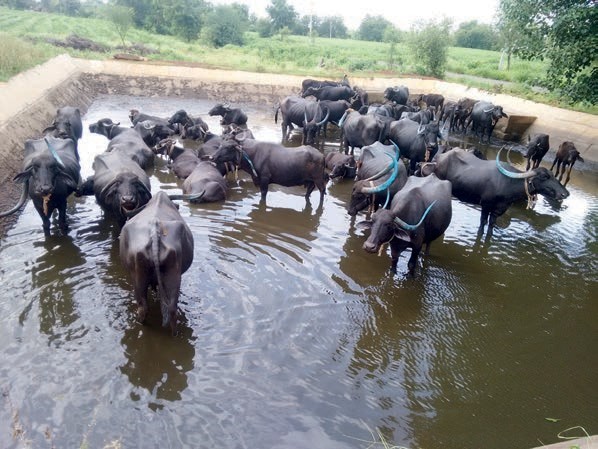Summer Management of Dairy Animals
- During extreme hot and humid or dry weather, the animal’s thermoregulatory capacity to dissipate heat by sweating and panting is compromised, causing summer/heat stress.
- Severe heat stress can raise body temperature, increase the pulse rate and peripheral blood flow, reduce feed intake and increase water intake.
- Heat stress can lead to loss of productivity, reduce breeding efficiency and even loss of life in extreme cases.
- Crossbred and exotic breeds of cattle are highly sensitive to heat stress compared to indigenous non-descript animals.
- Buffaloes are more prone due to their dark skin that absorbs more solar radiation and they have fewer sweat glands.

Keep the Animals Cool!
- Animals must be kept in the shade, especially under trees or a 9-10 foot high thatched roof with good ventilation.
- To provide a cooler ambience, the roof can be thatched with paddy/sorghum straw, sugarcane trash, etc., painted white or a false ceiling insulation provided.
- Create barriers against hot winds using a thatched wall or by hanging wet gunny cloth/bags sprinkled with water.
- Heat stress can be managed by spraying/sprinkling water on the animal for 2-5 minutes at 45-60 minutes intervals.
- Misting/fogging of water in the microenvironment of the animal, fans/blowers too can be used in sheds.
- Wallowing in ponds is the most effective way of combating heat stress in buffaloes.
- Drinking water should be provided to the animals round the clock and in the shade.
- Feed the animals early in the morning, evening and night.
- Grazing is preferable early in the morning and late evening to avoid the scorching heat.
- Increase ration density to provide optimum nutrients during heat stress. Low fibre and high fermentable carbohydrate diets have lower dietary heat increment compared to high fibre diets.
- A potassium-rich mineral mixture is preferred to ensure increased mineral supplementation during hot weather to meet the increased demand for minerals.


